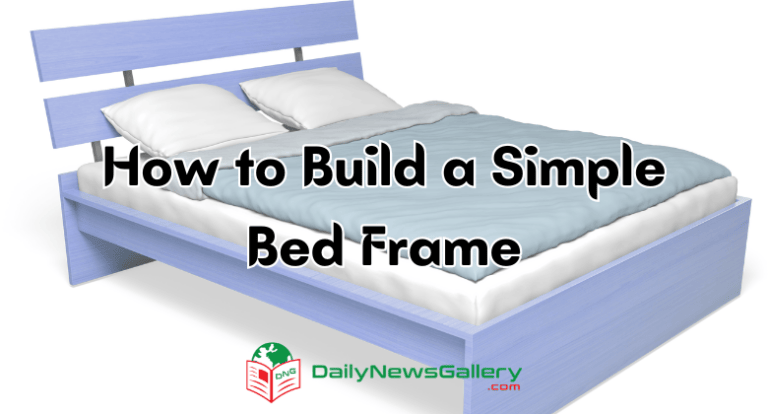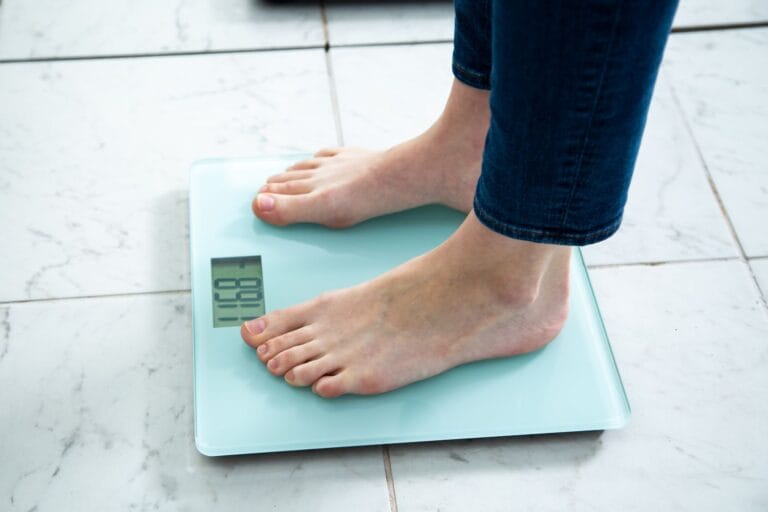
Welcome to “Mattress Matters: Ensuring the Best Fit for Your Bed Frame”, where we uncover the secrets to finding the perfect mattress for your sleep sanctuary. We all know that a good night’s sleep is essential, and the right mattress can make all the difference. So, let’s dive in and explore the world of mattresses, bed frames, and the art of finding your ideal sleep surface.
When it comes to choosing the best mattress for your bed frame, there are a few key factors to consider. From the size of your bed frame to your preferred sleeping position, understanding these aspects will help you make an informed decision. We’ll guide you through the various mattress sizes available, including twin, full, queen, and king, and help you determine which one will fit your bed frame like a glove.
But wait, there’s more to mattress shopping than just the size! We’ll also delve into different mattress types, such as memory foam, innerspring, and hybrid mattresses, demystifying the jargon and providing you with the knowledge you need to find your dream mattress. So, let’s embark on this mattress quest together and uncover the secrets to a good night’s sleep. Are you ready?
Mattress Matters: Ensuring the Best Fit for Your Bed Frame
Choosing the right mattress for your bed frame is crucial for a good night’s sleep. Consider the size, material, and firmness level to ensure the perfect fit. The size should match the bed frame dimensions, while the material should suit your preferences.
Don’t forget to factor in the firmness level, whether you prefer a plush or firm mattress. By finding the best fit, you’ll enjoy better sleep and wake up feeling refreshed.
Understanding Bed Frame Compatibility with Mattresses
When it comes to your bed frame, finding a mattress that fits perfectly is essential for both comfort and safety. Let’s explore the key factors to consider:
1. Dimensions
Size Matters: One of the first things you need to determine is the size of your bed frame. Measure the length, width, and height to ensure your new mattress fits snugly. The most common bed sizes are twin, full, queen, king, and California king. Remember to account for any additional features like built-in storage or specialty frames.
Bed Frame Type: Different bed frame types have varying widths and lengths. Standard frames usually have dimensions slightly larger than the mattress they’re designed to accommodate. Platform beds typically have thinner profiles, while sleigh or canopy beds may require specific mattress sizes due to their unique designs.
Height Considerations: Measure the height of your bed frame, including any additional mattress toppers or box springs you plan to use. This will help you select a mattress with the appropriate thickness, ensuring it doesn’t interfere with the headboard or footboard.
2. Bed Frame Type
Box Spring Beds: Traditional box spring beds usually require mattresses with coil-spring or hybrid construction. These mattresses provide the necessary support and flexibility to complement the box spring foundation.
Platform Beds: Platform beds have a solid or slatted base, which eliminates the need for a box spring. Foam mattresses, latex mattresses, and memory foam mattresses are popular options for platform beds, as they provide excellent support without the need for coil springs.
Adjustable Beds: If you have an adjustable bed frame, you’ll need a mattress specifically designed for this purpose. These mattresses are flexible and can adapt to the various positions of the bed frame without compromising comfort or durability.
The Benefits of Choosing the Right Size and Type of Mattress for Your Bed Frame
Choosing the right size and type of mattress for your bed frame offers several benefits:
- Enhanced Comfort: Using a properly sized mattress ensures that you have enough space to stretch and move comfortably during sleep.
- Better Support: The right type of mattress provides optimal support for your body, promoting better spinal alignment and reducing aches and pains.
- Improved Durability: Matching your mattress to your bed frame helps prevent undue wear and tear, increasing both the lifespan of the mattress and the stability of the frame.
- Safe and Stable Sleep: A properly fitted mattress minimizes the risk of accidents, such as limbs getting caught between the mattress and the frame.
Finding Your Perfect Mattress
With so many mattress options available, finding the right one can seem overwhelming. But fear not! Here are some key considerations and tips to simplify your search:
1. Sleep Position and Personal Preferences
Back Sleepers: If you primarily sleep on your back, you’ll need a mattress that offers firm support while contouring to your body’s natural curves. Look for medium to medium-firm mattresses to maintain proper spinal alignment.
Side Sleepers: Side sleepers often benefit from softer mattresses that provide pressure relief to the shoulders and hips. Look for hybrid or foam mattresses with a plush comfort layer to alleviate any discomfort.
Stomach Sleepers: Stomach sleepers generally need a firmer mattress to prevent excessive sinking and maintain proper spinal alignment. Look for medium-firm to firm mattresses that provide adequate support.
Personal Preferences: Consider factors like temperature regulation, motion isolation, and edge support based on your personal preferences. For example, memory foam and hybrid mattresses are known for their excellent motion isolation, while latex mattresses offer exceptional breathability.
2. Mattress Types
Innerspring Mattresses: Innerspring mattresses feature coil springs that provide support and bounce. Choose a mattress with individually pocketed coils for better motion isolation and contouring.
Memory Foam Mattresses: Memory foam mattresses are renowned for their pressure-relieving properties and excellent motion isolation. Look for high-density foam for durability and consider features like gel-infused foam for improved cooling.
Latex Mattresses: Latex mattresses offer natural responsiveness, breathability, and hypoallergenic properties. Talalay latex provides a softer feel, while Dunlop latex is denser and more supportive.
Hybrid Mattresses: Hybrid mattresses combine the benefits of different materials, usually with an innerspring base and a comfort layer of foam or latex. They provide the perfect balance of support, pressure relief, and responsiveness.
Tips for Choosing the Perfect Mattress
- Test It Out: Whenever possible, try lying on the mattress in-store or take advantage of the trial period offered by online retailers. This will give you a better idea of how it feels and whether it meets your comfort needs.
- Consider Your Partner: If you share a bed, opt for mattresses with good motion isolation to prevent sleep disruptions when one person moves.
- Don’t Forget About Mattress Care: Factor in cleaning and maintenance requirements, such as whether the mattress is flippable or has a removable and washable cover.
- Read Reviews: Check online reviews and ratings to gather insights from other customers’ experiences. Remember to consider the overall consensus rather than individual opinions.
Investing in Better Sleep
Your mattress is a long-term investment in your well-being and sleep quality. By understanding the key factors that determine the best fit for your bed frame and considering your personal preferences, you can make an informed decision that leads to better sleep. So, take the time to explore your options, lie down, and find the perfect mattress that will make every night’s sleep a dream come true.
Frequently Asked Questions
Choosing the right mattress for your bed frame is crucial for a good night’s sleep. Here are some common questions regarding finding the best fit:
1. What should I consider when selecting a mattress for my bed frame?
When choosing a mattress for your bed frame, there are a few factors to consider. First, think about the size of your bed frame and ensure that the mattress dimensions match. Additionally, consider your preferred level of firmness or softness to ensure optimal comfort. Lastly, think about any specific needs you may have, such as back pain relief or allergies, and choose a mattress that addresses those concerns.
By taking into account the size, comfort preferences, and any specific requirements, you can find a mattress that fits your bed frame perfectly and provides you with a restful sleep.
2. Can I use any mattress with my bed frame, or do I need a specific type?
While some bed frames are versatile and can accommodate various mattress types, others may require specific mattress specifications. For example, platform beds often work best with mattresses specifically designed for them since they provide the necessary support without a box spring.
It’s essential to read the manufacturer’s recommendations for your bed frame to ensure you choose a mattress that is compatible and maximizes its functionality. This will ensure both a proper fit and the best sleep experience.
3. What are some common mattress sizes available for different bed frame types?
When it comes to mattress sizes, the most common options include Twin, Twin XL, Full, Queen, King, and California King. Twin and Twin XL are suitable for smaller bed frames or single sleepers, while Full and Queen work well for average-sized bed frames and couples. King and California King mattresses are larger options ideal for spacious bed frames and those who prefer extra room.
However, keep in mind that these sizes may vary depending on the country or region you’re in. It’s always a good idea to measure your bed frame and check available mattress sizes to ensure the best fit.
4. How can I test if the mattress fits my bed frame properly?
To test if a mattress fits your bed frame properly, start by measuring the dimensions of your bed frame. Compare these measurements to the mattress dimensions provided by the manufacturer. Ideally, there should be no significant gaps between the mattress and the bed frame. The mattress should fit snugly and securely on the frame.
If you’re unsure, you can also consult the mattress manufacturer or visit a store to try out different mattress options on your bed frame. This will allow you to determine the best fit, ensuring a comfortable and well-supported sleep surface.
5. What are the consequences of using a mattress that doesn’t fit my bed frame?
Using a mattress that doesn’t fit your bed frame properly can lead to a range of issues. A mattress that is too small or too large for your frame may not provide adequate support, resulting in discomfort and potential back or neck pain. It may also lead to premature wear and tear of the mattress, reducing its lifespan.
Additionally, an ill-fitting mattress can affect the overall stability and safety of your bed frame. It may shift, slide, or cause uneven weight distribution, posing a risk of falls or accidents during sleep. Therefore, it’s crucial to ensure the right mattress fit for your bed frame to optimize comfort, support, and safety.
Choosing the right mattress for your bed frame is important for a good night’s sleep. Make sure you measure your bed frame and choose a mattress that fits properly. Consider the firmness level that suits your comfort preferences.
Remember to check the dimensions and weight limit of your bed frame to ensure it can support your chosen mattress. Take your time to research and try out different mattresses before making a decision. Your sleep quality and overall well-being depend on it!
In addition to the right mattress, don’t forget other factors like pillow choices and sleeping positions that also affect your sleep quality. And remember, it’s not just about the money; a higher price doesn’t always mean a better mattress. Trust your comfort and needs when making this important decision. So, sleep tight, and choose the right mattress for your bed frame!






